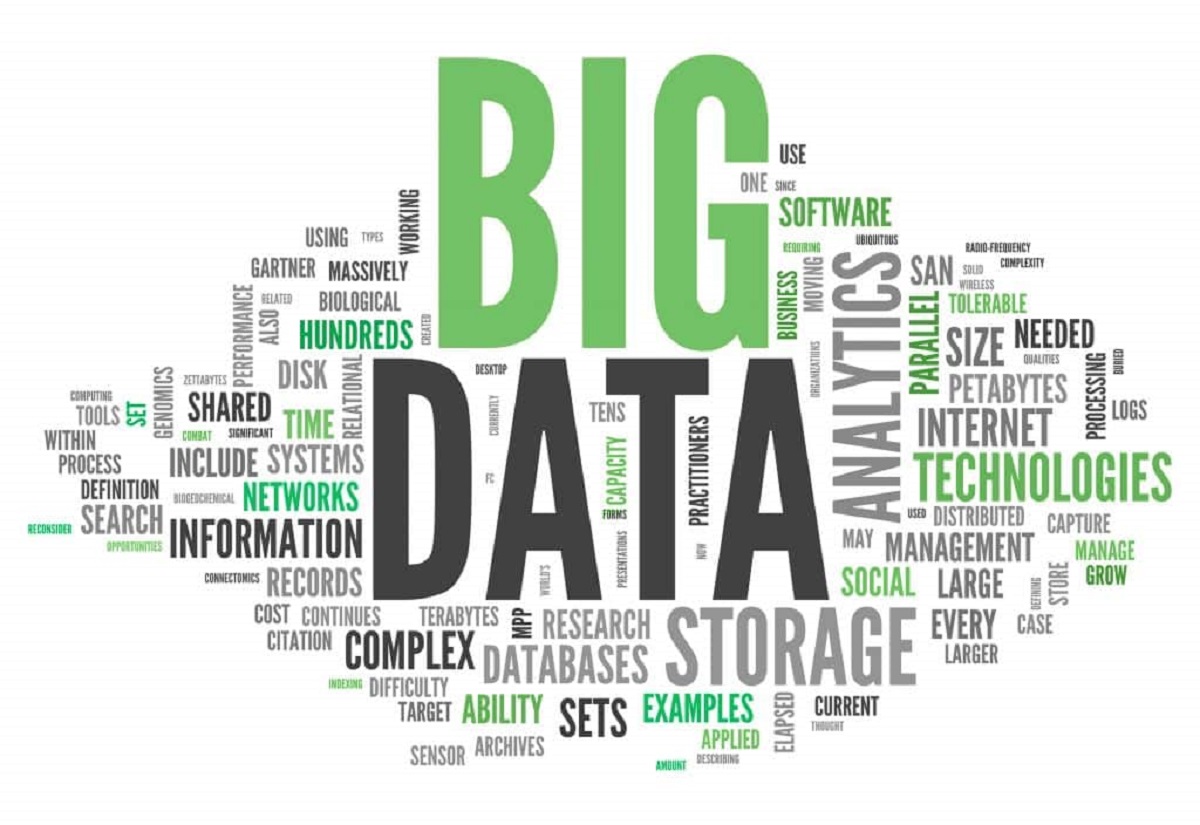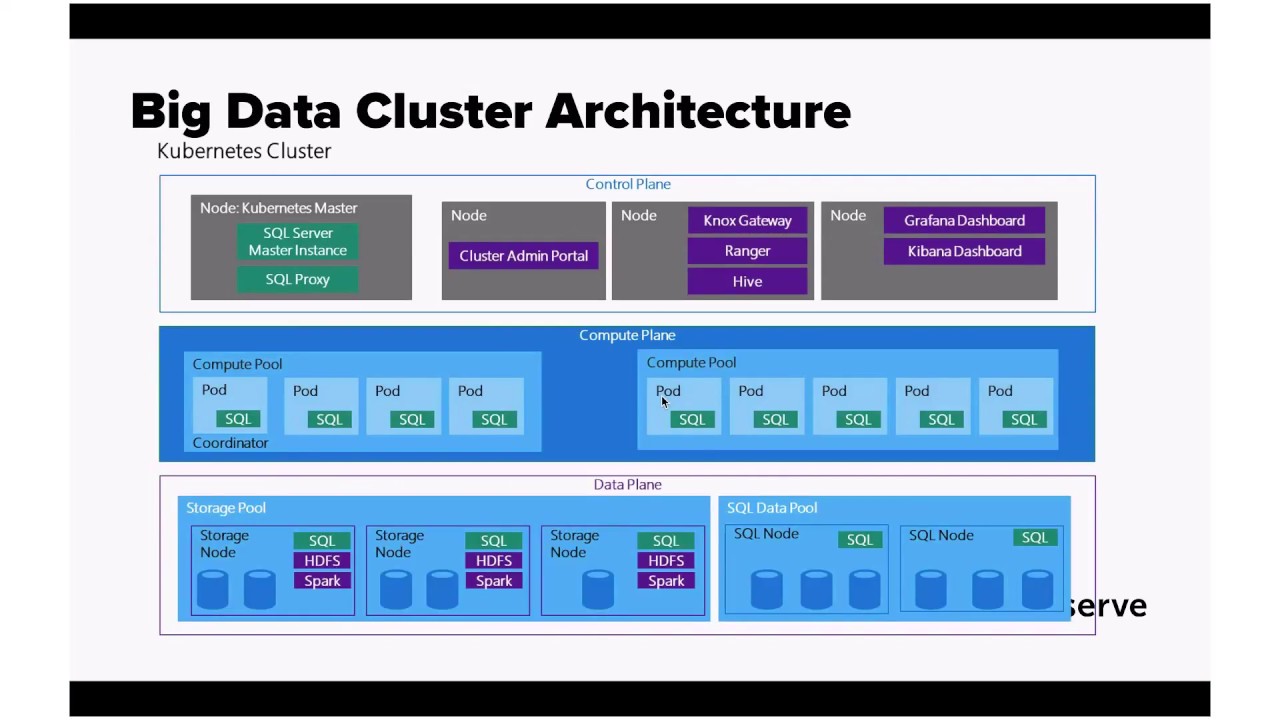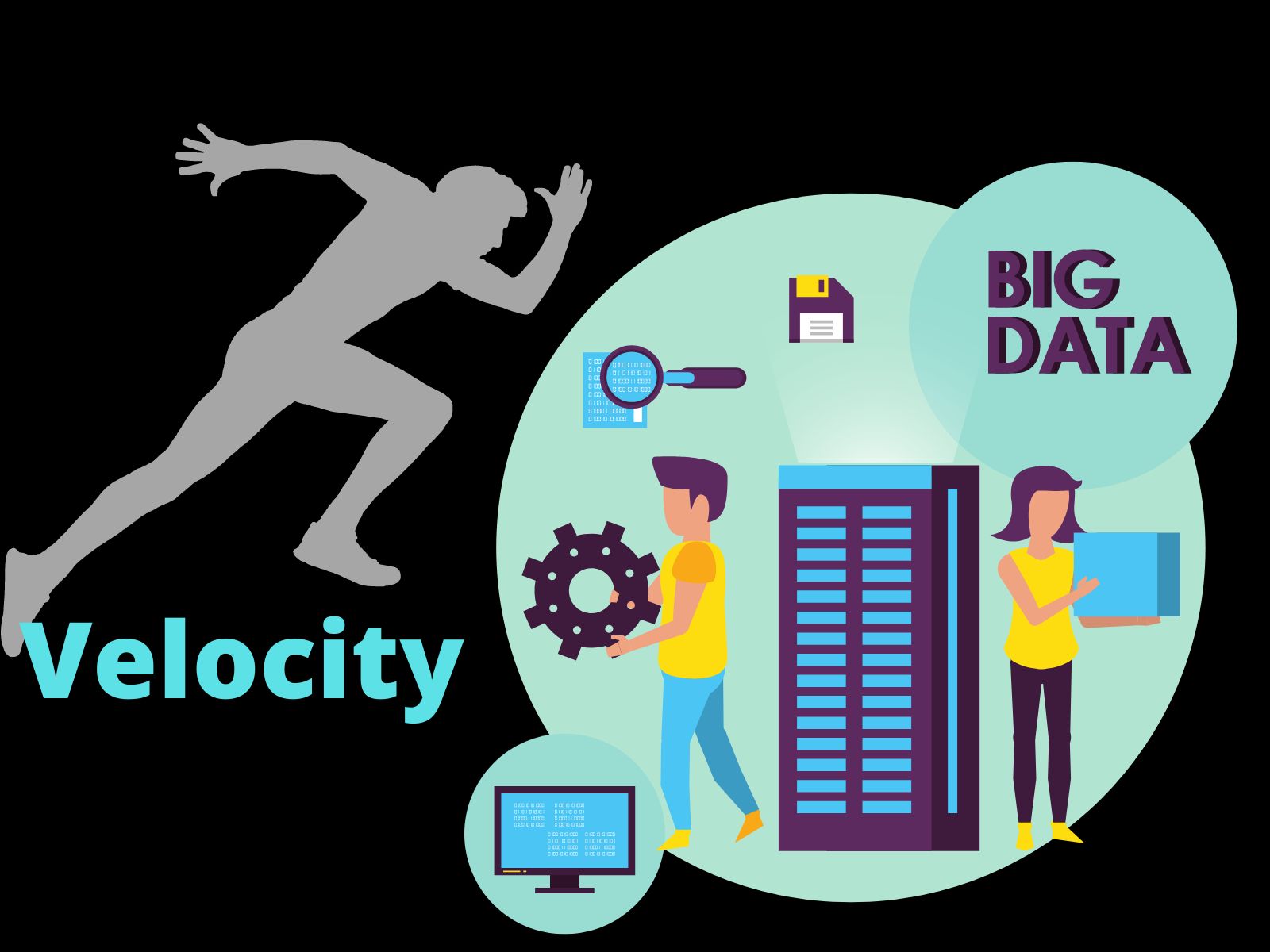Introduction
As the digital world continues to expand at an exponential rate, the amount of data being generated and collected has reached unprecedented levels. This massive accumulation of data, known as “Big Data,” has become a valuable resource for businesses and organizations across various industries. Big Data refers to extremely large and complex datasets that cannot be processed efficiently using traditional data processing methods.
The characteristics of Big Data are what set it apart from regular data. Understanding these characteristics is crucial for businesses to make the most of this vast resource and derive valuable insights. The six main characteristics of Big Data are volume, velocity, variety, veracity, value, and variability. Additionally, the ability to visualize Big Data plays a significant role in analyzing and comprehending the information it contains.
In this article, we will explore each of these characteristics in detail and examine their significance in the realm of Big Data.
Let’s dive into the world of Big Data and uncover the underlying features that make it such a powerful tool for organizations in the digital age.
Volume
The first characteristic of Big Data is volume. Volume refers to the sheer amount of data being generated and collected. With the exponential growth of digital technologies, the volume of data has skyrocketed. Previously, organizations dealt with data in gigabytes or terabytes, but now they are faced with data in the scale of petabytes and exabytes.
This increase in volume is primarily due to the proliferation of connected devices, social media platforms, online transactions, and sensors embedded in various systems. For example, social media platforms generate an enormous amount of data through user interactions, posts, comments, likes, and shares. Likewise, online marketplaces create extensive datasets from customer transactions, including purchase history, preferences, and browsing behavior.
The massive volume of data presents both challenges and opportunities for organizations. On one hand, it requires robust infrastructure, storage, and processing capabilities to handle such vast amounts of data. On the other hand, this extensive volume of data provides organizations with a treasure trove of information that can be leveraged to gain valuable insights.
By effectively managing and analyzing Big Data, organizations can identify patterns, trends, and correlations that were previously undiscoverable. This, in turn, enables data-driven decision-making, improved operational efficiencies, enhanced customer experiences, and the development of innovative products and services.
Moreover, the volume of Big Data is expected to continue growing exponentially in the coming years. As technologies like the Internet of Things (IoT) and machine learning become more prevalent, the amount of data generated will only increase further, driving the need for organizations to adapt and find effective ways to deal with this ever-expanding volume.
Velocity
The second characteristic of Big Data is velocity, which refers to the speed at which data is generated and processed. In today’s interconnected world, data is generated at an unprecedented rate, and the speed at which it is created can be overwhelming for organizations to handle.
With the advent of real-time data sources such as social media feeds, online transactions, IoT devices, and sensors, data is continuously flowing in and needs to be processed quickly and efficiently. For example, social media platforms generate a massive amount of data every second, including tweets, status updates, photos, videos, and more.
Organizations need to capture, store, and analyze this data in real-time or near real-time to derive meaningful insights and take timely action. The ability to process data with high velocity is essential for various applications, including fraud detection, real-time recommendations, supply chain optimization, and predictive maintenance.
Dealing with high-velocity data requires advanced infrastructure and technologies capable of handling the constant influx of information. This includes distributed computing systems, stream processing platforms, and high-speed networks. By leveraging these tools, organizations can capture and analyze data in real-time, enabling them to make quick decisions and respond to changing circumstances effectively.
However, velocity is not just about the speed of data acquisition; it also encompasses the speed of data processing and analysis. Traditional batch processing methods are no longer sufficient to handle the velocity of Big Data. Organizations are adopting technologies like Apache Kafka, Apache Storm, and Apache Spark, which allow for real-time or near real-time data processing and analytics.
With the increasing velocity of Big Data, organizations can gain significant advantages by leveraging timely insights. The ability to rapidly process and analyze data enables organizations to detect emerging trends, identify anomalies, and make informed decisions in shorter time frames.
As the digital landscape continues to evolve, the velocity of Big Data will only accelerate. Organizations need to invest in the right tools and technologies to manage the velocity of data effectively and harness its potential for driving innovation and competitive advantage.
Variety
Variety is another essential characteristic of Big Data. It refers to the diverse types and formats of data that organizations encounter in their data collection efforts. In the modern digital era, data comes in various forms beyond the traditional structured data typically found in databases.
Big Data includes structured, semi-structured, and unstructured data. Structured data is organized and formatted, conforming to a predefined schema, such as data stored in a relational database. Semi-structured data, on the other hand, does not adhere to a strict schema but still has some form of organization, such as XML or JSON formatted data. Unstructured data, the most challenging to work with, lacks a predefined organization and includes text, images, audio, video, social media posts, emails, and more.
The wide variety of data sources and formats presents challenges for organizations in terms of data acquisition, storage, integration, and analysis. Traditional data processing technologies are designed to handle structured data, which makes handling unstructured and semi-structured data more complex.
However, the variety of Big Data also brings significant opportunities. By integrating and analyzing diverse types of data, organizations can gain a comprehensive and holistic understanding of their operations, customers, and market trends. For example, combining structured customer data with unstructured social media data can provide valuable insights into customer sentiment and preferences.
Moreover, the increasing availability of data sources and formats allows organizations to tap into previously untapped data repositories. This could include analyzing log files, sensor data, geolocation data, call center records, and more. By incorporating this additional information, organizations can uncover hidden patterns, correlations, and insights that were not evident from structured data alone.
Effectively managing the variety of Big Data requires advanced data integration and analytics tools. This includes technologies such as data lakes, data virtualization, natural language processing, and machine learning algorithms. These tools enable organizations to extract valuable information from diverse data sources and leverage it for informed decision-making, predictive analytics, and gaining a competitive edge in the market.
Veracity
Veracity is a critical characteristic of Big Data that refers to the quality, accuracy, and reliability of the data. With the vast amount of data being generated from numerous sources, ensuring the veracity of Big Data presents a significant challenge for organizations.
Veracity issues can arise due to various reasons, including human error, data collection methods, data entry mistakes, data duplication, data inconsistency, and data quality problems. Inaccurate or unreliable data can lead to incorrect analysis, misinterpretation of insights, and faulty decision-making.
Veracity issues can also arise from the presence of outliers, anomalies, or noise within the data. Outliers are data points that significantly deviate from the normal range and can skew analysis results. Anomalies, on the other hand, are data patterns that differ significantly from the expected behavior and may indicate errors or unusual events.
Addressing veracity issues requires data governance practices, data cleansing techniques, and robust quality control measures. Organizations must establish data quality standards, implement data validation processes, and regularly monitor data integrity.
Advanced data analytics techniques, such as anomaly detection algorithms and data profiling tools, can help organizations identify and mitigate veracity issues. These tools can detect data inconsistencies, identify outliers, and provide insights into potential data quality problems.
Veracity is closely tied to data trustworthiness. Organizations must prioritize data integrity and establish transparency and accountability in their data management practices. Data governance frameworks can help ensure data accuracy, reliability, and compliance with privacy regulations.
Veracity issues also extend to the ethical considerations surrounding data. Organizations must handle sensitive data ethically and ensure the privacy and security of individuals’ information. This includes obtaining informed consent for data collection, implementing robust data security measures, and adhering to relevant data protection regulations.
By addressing veracity concerns and maintaining high-quality data, organizations can have confidence in the insights and decisions derived from Big Data analysis. It enables organizations to make informed decisions, develop reliable predictions, and drive impactful outcomes.
Value
Value is a crucial characteristic of Big Data that focuses on the potential benefits and insights that can be derived from analyzing and utilizing the data. The true value of Big Data lies in its ability to provide organizations with meaningful information that can drive strategic decisions, improve operations, and enhance customer experiences.
Extracting value from Big Data requires organizations to move beyond merely collecting and storing data. They need to have the capability to analyze and interpret the data to derive actionable insights. This involves employing advanced data analytics techniques, such as data mining, machine learning, and predictive modeling algorithms.
The value of Big Data lies in its ability to uncover hidden patterns, trends, and correlations that were previously unknown. By identifying these patterns, organizations can gain a deeper understanding of customer behavior, market dynamics, and operational inefficiencies.
Through data analysis, organizations can enhance their decision-making processes, optimize their operations, and develop innovative products and services. For example, retailers can use market basket analysis to identify product associations and implement targeted cross-selling strategies. Manufacturers can utilize predictive maintenance to anticipate potential equipment failures and optimize maintenance schedules, reducing downtime and costs.
The value of Big Data also lies in its potential for personalized customer experiences. By analyzing large volumes of customer data, organizations can gain insights into individual preferences, behaviors, and needs. This enables them to deliver personalized recommendations, targeted marketing campaigns, and enhanced customer service, ultimately improving customer satisfaction and loyalty.
Furthermore, the value of Big Data extends beyond individual organizations. When combined and analyzed at a larger scale, Big Data can provide insights into broader societal challenges and trends. It can help address issues related to healthcare, transportation, urban planning, and more. Governments and policymakers can leverage Big Data to make informed decisions, allocate resources effectively, and create policies that benefit the population at large.
However, it is essential to note that the value of Big Data is not automatic. Organizations need to invest in the right technologies, analytical skills, and data infrastructure to unlock its potential. They must establish a data-driven culture that values and utilizes data for decision-making at all levels of the organization.
By harnessing the value of Big Data, organizations can gain a competitive advantage, innovate, and create value-added solutions that align with the needs of their customers and society as a whole.
Variability
Variability is an important characteristic of Big Data that refers to the inconsistency and volatility of data. In contrast to traditional structured data sources, Big Data encompasses data that can vary significantly in terms of format, quality, and availability.
One aspect of variability in Big Data is the temporal aspect. Data is not static; it can change over time. This includes changes in customer preferences, market trends, and other factors that influence the data being generated and collected. For example, social media trends and viral content can shift rapidly, requiring organizations to adapt and analyze data in real-time to stay relevant.
Another aspect of variability is the diverse sources of data. Big Data can originate from a wide range of sources, such as social media platforms, e-commerce websites, sensors, mobile devices, and more. Each data source may have its own structure, format, and quality, making data integration and analysis more complex.
Furthermore, the quality and reliability of the data can vary significantly. Inaccurate or incomplete data may be encountered due to human errors, data entry mistakes, or problems with data acquisition and processing. Organizations must address these variability issues by implementing data cleansing and validation processes to ensure the accuracy and reliability of the data used for analysis.
The variability of Big Data also leads to challenges in data integration. To gain comprehensive insights, organizations often need to combine and analyze data from various sources. This requires integrating structured and unstructured data, merging data from different systems, and dealing with data formats that may not be compatible with each other.
Despite the challenges variability presents, it also provides opportunities for organizations to gain deeper insights and make more informed decisions. By analyzing diverse and fluctuating data sources, organizations can capture a more comprehensive understanding of their operations, target market, and customer behavior.
Advanced analytics techniques, such as data integration, data fusion, and data mining, can help organizations overcome the challenges posed by variability and extract meaningful insights from diverse data sources. These techniques enable organizations to identify patterns, relationships, and trends that may not be apparent when analyzing individual datasets separately.
Organizations must adapt to the variability of Big Data by developing flexible data handling and analysis processes. This includes implementing scalable data infrastructure, adopting agile data integration techniques, and utilizing advanced analytics tools that can handle diverse data formats and sources.
By effectively managing the variability of Big Data, organizations can uncover valuable insights, make more accurate predictions, and gain a competitive edge in their respective industries.
Visualization
Visualization is a key aspect of dealing with Big Data and plays a vital role in understanding and presenting complex information in a visual format. With the enormous volume, velocity, variety, veracity, and variability of Big Data, visualization techniques enable organizations to make sense of the data and communicate insights effectively.
Visualizing Big Data allows for a more intuitive understanding of patterns, trends, and correlations that may not be immediately apparent from raw data. By representing data visually, organizations can gain deeper insights, identify outliers, and make data-driven decisions more efficiently.
One of the primary benefits of visualization is the ability to uncover patterns and relationships among data points. By using charts, graphs, and data visualizations, organizations can detect trends over time, compare different variables, and identify anomalies that may require further investigation.
Visualization also enables organizations to communicate complex information to stakeholders and decision-makers more effectively. By presenting data in a visually appealing and digestible manner, organizations can convey insights, trends, and recommendations in a way that is easily understandable and actionable.
Furthermore, visualization techniques can help in identifying patterns, trends, and correlations that may not be evident from tabular data alone. By representing data visually, organizations can quickly identify relationships and make connections between different data points.
Interactive visualization tools and dashboards are particularly valuable for exploring and analyzing Big Data. They allow users to manipulate and explore data in real-time, filter and drill down into specific dimensions, and visualize data from multiple perspectives.
In addition to providing insights and aiding decision-making, visualization also enhances data storytelling. It allows organizations to present compelling narratives and convey the significance of their data to a wider audience. Visualizations can capture attention, evoke emotions, and facilitate understanding by presenting data in a visually engaging and relatable way.
However, it is important to note that effective visualization relies on proper data preparation and analysis. Data needs to be cleansed, aggregated, and transformed before it can be visualized to ensure accurate representation and meaningful insights.
Moreover, organizations need to choose appropriate visualization techniques based on the nature of the data and the audience. Different types of data, such as numerical, spatial, text, or temporal data, may require different visualization methods to convey the desired message effectively.
As Big Data continues to evolve and grow, visualization techniques will remain essential for understanding, analyzing, and presenting complex data. By harnessing the power of visualization, organizations can unlock the valuable insights hidden within Big Data and make informed decisions that drive innovation and success.
Conclusion
Big Data is revolutionizing the way organizations operate and make decisions in the digital age. The characteristics of Big Data, including volume, velocity, variety, veracity, value, variability, and visualization, present both challenges and opportunities for businesses across all industries.
The volume of data being generated has reached unprecedented levels, requiring organizations to invest in robust infrastructure and storage capabilities. The velocity at which data is produced necessitates real-time or near real-time processing to derive timely insights. The variety of data sources and formats calls for advanced integration and analytics tools to uncover valuable insights from structured, semi-structured, and unstructured data.
Veracity issues surrounding data quality and reliability must be addressed through data cleansing and validation processes. The value of Big Data lies in the transformative insights and opportunities it offers for data-driven decision-making, personalized customer experiences, and innovation.
Furthermore, the variability of Big Data demands flexibility in data handling processes, as organizations must deal with fluctuating data sources and formats. Visualization techniques play a crucial role in understanding and communicating complex data, allowing organizations to identify patterns, trends, and relationships more effectively.
To leverage the power of Big Data, organizations need to invest in advanced technologies, analytics skills, and data infrastructure. Establishing a data-driven culture that values data integrity, privacy, and security is crucial for deriving meaningful insights and making informed decisions.
As the world becomes increasingly digital, the importance of understanding and harnessing the potential of Big Data cannot be overstated. By effectively managing and analyzing Big Data, organizations can gain a competitive edge, drive innovation, and unlock new opportunities for growth and success in the data-driven era.

























